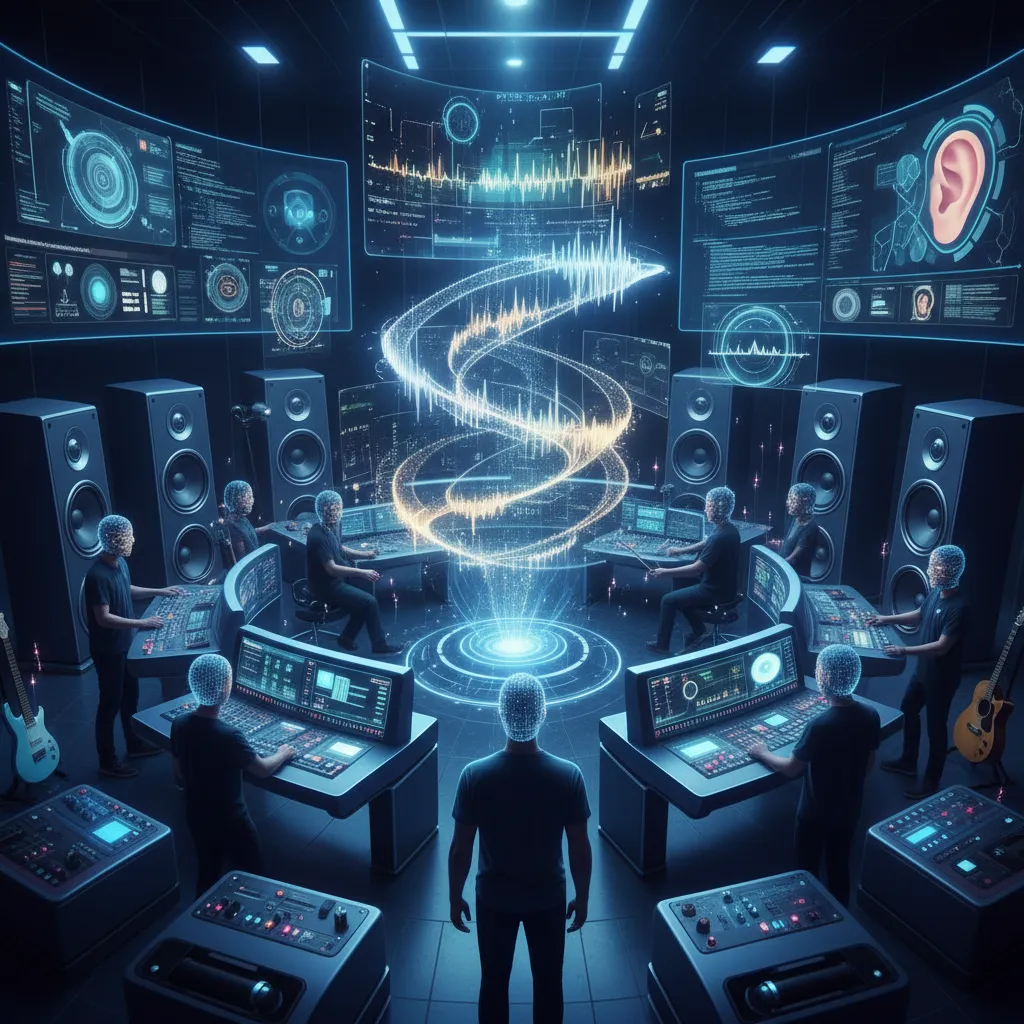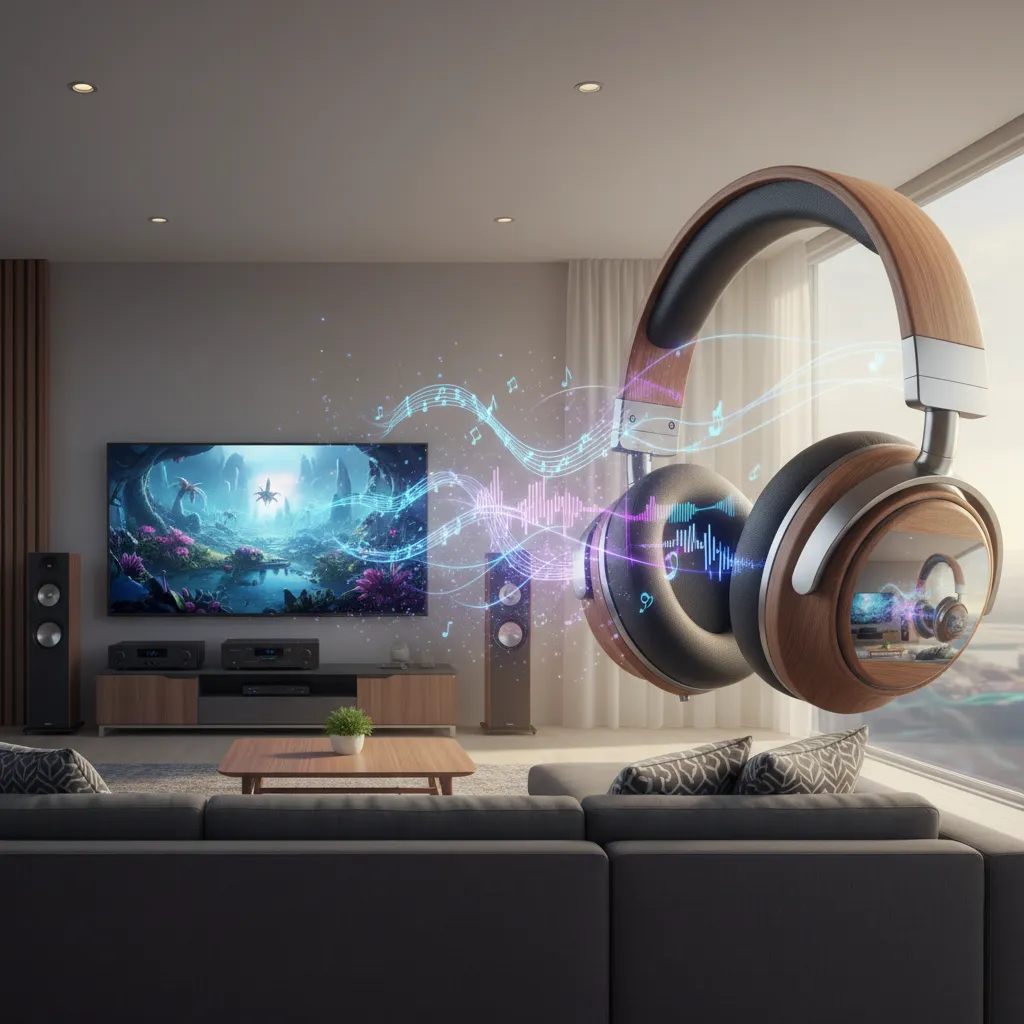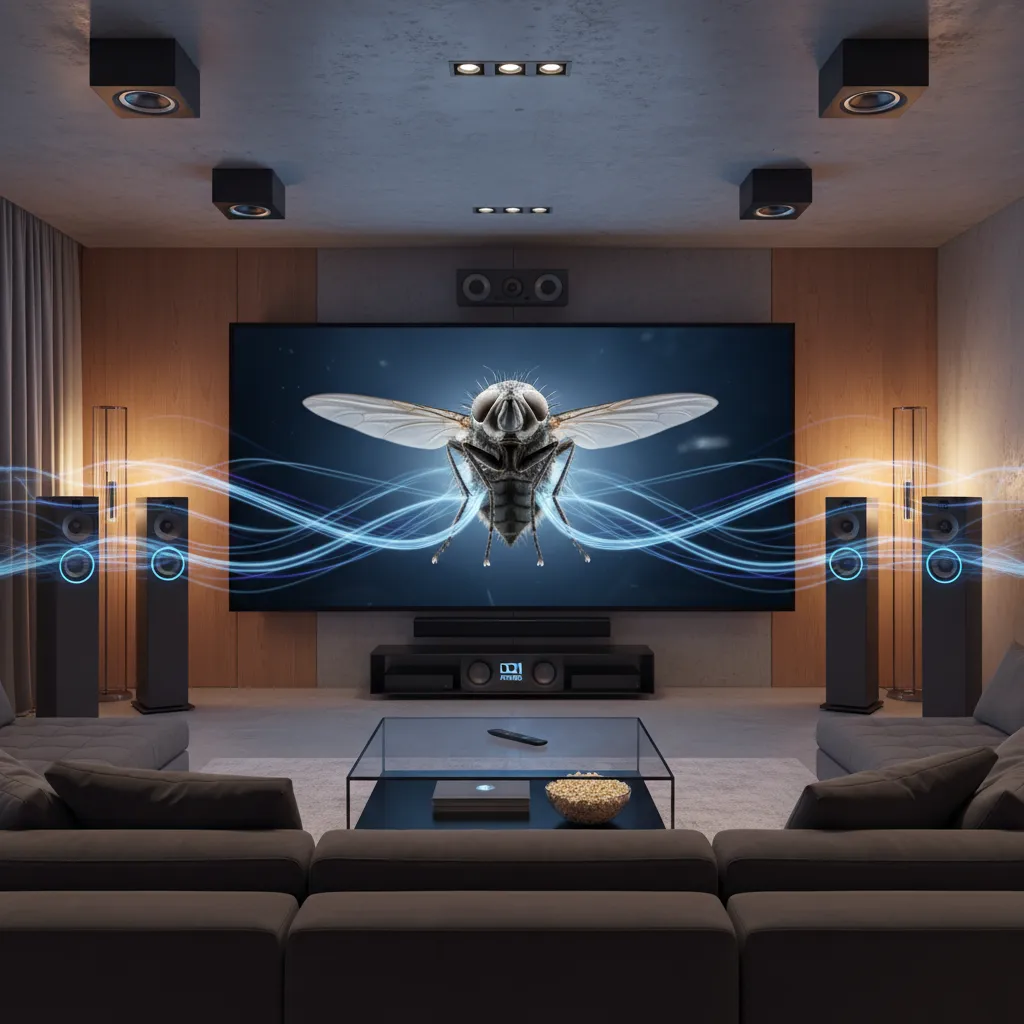Why That Fly Sounds So Real: The Wild World of Dolby Atmos (And How It’s Taking Over Your Living Room)
Let’s be honest: My first real brush with surround sound involved ducking under my buddy’s couch during the helicopter scene in a certain dino-filled blockbuster. Fast forward to today—now there’s Dolby Atmos, and apparently, your TV, soundbar, and even your music playlists are obsessed with it. But what the heck is Dolby Atmos, and why does every box at Costco suddenly think you need it? Stick around as we pull back the curtain (and maybe pop some popcorn) to see what makes this tech tick.
Surround Sound Has Come a Long Way (and Yes, It Started with Helicopters)
Think back to the first time you heard surround sound in a movie theater. Maybe it was during a heart-pounding helicopter scene—blades whirring from behind, swooping overhead, making you duck in your seat. That’s classic surround sound magic. But here’s the thing: for decades, surround sound was built on a pretty simple idea—channels. First, it was 5.1, then 7.1. The numbers refer to how many channels (not speakers!) are used to send sound around you. It was cool, but let’s be honest: it always felt a little flat, spatially speaking.
Surround sound started in cinemas, and eventually, it crept into our living rooms. Those early systems—5.1 and 7.1—were all about creating a circle of sound. You’d get:
- Five (or seven) main channels for sound in front, beside, and behind you
- One subwoofer channel for deep bass (that’s the “.1”)
But here’s the catch: each channel could feed multiple speakers, but every sound was “locked” to a channel. So, if a helicopter was supposed to fly overhead, it would just move from one side channel to the next. You’d get the idea, but it wasn’t truly three-dimensional. The sound was impressive, but it didn’t really move above you or feel like it was swirling around in real space.
Then, in 2012, Dolby Atmos technology changed everything. Its commercial debut came with Pixar’s Brave, and if you were lucky enough to catch it in one of those first theaters, you probably remember thinking:
To me, Dolby Atmos is what I always felt like surround sound should have been.
So, what makes Dolby Atmos so different? It’s all about spatial audio technology and a new way of thinking about sound. Instead of being stuck with channels, Atmos uses something called object-based audio. Here’s how it works:
- Each sound—like a buzzing fly, a rainstorm, or yes, a helicopter—becomes an audio object.
- The system can place these objects anywhere in a 3D space, not just left, right, or behind you, but also above you.
- In cinemas, Dolby Atmos can support up to 128 discrete audio tracks and 64 unique speaker feeds. That’s a massive leap from traditional 5.1 or 7.1 systems.
Think of it this way: channels are one-dimensional—they tell sound to go left, right, or center. Objects are multi-dimensional—they can move anywhere in the room, even overhead. That’s why a fly buzzing past your ear or a helicopter swooping overhead in a Dolby Atmos setup feels so real and immersive. It’s not just sound; it’s an immersive sound experience that puts you right in the middle of the action.
Today, you see the Dolby Atmos logo everywhere—from movie theaters to streaming boxes, soundbars, and even Apple Music. It’s the surround sound you always thought you were getting, but actually weren’t—until now.

It’s Not Just Louder—It’s Three-Dimensional: Object-Based Audio Demystified
When you think of surround sound, you might picture speakers all around your room, blasting the same sound from each side. That’s how traditional surround systems worked—if a helicopter flew by in a movie, all the speakers on the left would play that sound together. But Dolby Atmos flips the script with its object-based audio format, giving sound a whole new dimension—literally.
What Is Object-Based Audio?
Instead of locking sounds to specific channels (like “front left” or “rear right”), Atmos treats each sound as an audio object. Each object—whether it’s a buzzing fly, a raindrop, or a spaceship—can be placed anywhere in your room using three-dimensional coordinates. This is called audio objects spatial placement, and it’s the secret sauce behind Atmos’s 3D surround sound.
Sounds That Move—Anywhere
Imagine a fly buzzing around your living room. With Atmos, that fly isn’t stuck moving just left or right. The sound mixer can make it zip from the center speaker to the left front, then to the side, behind you, and even above your head using ceiling speakers. Each speaker can play its own part of the sound, or work together, so the fly’s path feels totally real. Your brain believes it’s actually in the room with you.
- Not just louder—more real: Sounds move smoothly in any direction, not just around you, but above and below too.
- Independent control: Each speaker can deliver unique sounds at any moment, mapped precisely to where the sound should be.
- Immersive experience: Effects like rain falling overhead or footsteps circling the room become possible and believable.
How Do They Do It?
Mix engineers use special tools—think of it like a video game controller or joystick—to steer sounds in real time. As one Dolby engineer put it:
You can kind of use a joystick to steer sounds around in three-dimensional space. It's really like that and it's so fun.
During spatial audio mixing, they assign each sound object a set of coordinates, telling the Atmos system exactly where it should appear in your room. The system then figures out which speakers to use, based on your actual setup—not just a fixed set of channels. Whether you have five speakers or a full-blown theater with 128, Atmos adapts, rendering each audio object in the right spot.
128 Audio Objects—All at Once
Here’s where it gets wild: Atmos supports up to 128 discrete audio objects in a single mix. That means up to 128 different sounds can be flying around your living room at the same time, each with its own unique path and position. This isn’t just a marketing buzzword—3D surround sound is hardwired into the format’s DNA.
So, next time you hear that fly zip overhead or a car zoom past your couch, remember: it’s not just about more speakers. It’s about precise audio objects placement in real, three-dimensional space—thanks to the magic of Dolby Atmos and object-based audio.

From Living Room to Headphones: The Many Faces (and Loopholes) of Dolby Atmos
Dolby Atmos started as a game-changer in movie theaters, but now it’s everywhere—from your home theater setup to your headphones, and even your car. If you’ve seen the Dolby Atmos logo on your soundbar, TV, or streaming service, you might wonder: what exactly are you getting? Let’s break down how Atmos sneaks into so many devices, and why not all Atmos experiences are created equal.
Atmos in the Home Theater: The Real Deal
In a true home theater setup, Dolby Atmos features shine brightest. The classic approach uses a receiver and multiple speakers, including special up-firing drivers. These speakers bounce sound off your ceiling, creating those famous “height” effects—like a helicopter flying overhead or, yes, a fly buzzing right past your ear. If you’re serious, you can even install in-ceiling speakers for the ultimate immersive sound experience. Typical home setups might look like 5.1.2 or 7.1.4 (that’s five or seven speakers around you, one subwoofer, and two or four height channels).
Soundbar Dolby Atmos: The Shortcut
Don’t have space (or budget) for a full speaker array? Soundbar Dolby Atmos systems are hugely popular. Many soundbars now include up-firing speakers to mimic those overhead effects. Some even use clever processing to “virtualize” height, so you get a taste of Atmos without drilling holes in your ceiling. Is it as good as a full home theater? Not quite, but it’s a big step up from regular TV sound.
Virtual Atmos: Faking It Till You Make It
Here’s where things get interesting—and a little sneaky. You’ll spot the Dolby Atmos logo on TVs, streaming services, and even basic audio setups that don’t have any up-firing or ceiling speakers. How? Through virtual Atmos. This uses psychoacoustic tricks, digital processing, and speaker placement to “fake” 3D sound. Sometimes, it works surprisingly well. Other times, it’s more of a branding move. As Dolby says:
“Dolby Atmos is going to provide great sound no matter how many speakers you have.”
But let’s be real: the wow-factor varies—a lot. A virtual Atmos soundbar can’t match the impact of a full-blown, multi-speaker home theater setup.
Atmos on Streaming Services and Headphones
Atmos is everywhere on streaming platforms like Disney Plus, Netflix, and Apple Music. Even if you’re just using headphones, you can get a version of Atmos. This is done with binaural effects and sometimes head-tracking, making it feel like sound is coming from all around—even above you. It’s not true 3D audio, but it’s a cool trick for movies and music on the go.
Wild Card: Atmos in Your Car
Believe it or not, some cars now offer Dolby Atmos sound systems. Imagine your teenage self jamming out with immersive sound as you drive. Atmos is truly everywhere!
Bottom line: Dolby Atmos adapts to whatever device you’re using. The more speakers you have, the more impressive the effect. But thanks to smart processing, you can enjoy a taste of immersive sound experience whether you’re in your living room, wearing headphones, or even cruising down the highway.

Conclusion: Is It Worth the Hype? (And Should You Duck during Your Next Movie Night?)
So, after all the buzz, is Dolby Atmos really worth the hype? If you’re chasing that truly immersive sound experience—the kind that makes you want to duck when a helicopter swoops overhead or a fly buzzes past your ear—then the answer is a resounding yes. Dolby Atmos isn’t just a fancy logo or a marketing gimmick. As one audio expert put it,
“Dolby Atmos isn’t just a logo—it’s a game-changer in how we experience sound, whether you’re at the movies, at home, or wearing headphones. Its object-based, height-enhanced format makes audio feel real enough to duck.”
The magic of Dolby Atmos lies in its flexibility. Thanks to some seriously smart processing, Atmos adapts to your home theater setup—whether you’ve got a full-blown surround sound system with ceiling speakers, a sleek soundbar, or just a pair of headphones. It knows what your device can handle and tailors the sound to make the most of it. Even with a basic setup, you’ll notice that movies, music, and games sound bigger, richer, and more three-dimensional than ever before. That’s the power of Atmos features at work.
But let’s be real: the more speakers you have, the more impressive the effect. If you want that full “raise your popcorn” moment, where sound truly envelopes you from every angle—including above—investing in a robust surround sound system is the way to go. Soundbars with virtual Atmos can come surprisingly close, and headphones can give you a taste, but nothing beats the impact of a dedicated home theater setup with multiple speakers (and yes, some ceiling action). The difference is clear: a full-on Atmos system brings you as close as possible to the director’s vision, making every scene feel alive and immersive.
That said, don’t let a lack of hardware stop you from enjoying what Atmos has to offer. The technology is designed to scale, so you’ll still get a bigger, more expansive soundstage even from a single soundbar or a pair of headphones. Atmos is as real—or as virtual—as your setup allows, but it almost always sounds better than standard audio. Whether you’re watching a blockbuster, gaming, or streaming music, Atmos aims to create a 360-degree, three-dimensional sound envelope that pulls you right into the action.
Atmos is everywhere now—on streaming platforms, in new TVs, in gaming consoles, and even in music streaming apps. The logo has become a mark of audio excellence, but remember: sometimes it’s just a sticker, and the true experience depends on your gear. Still, with its smart processing and object-based sound, Dolby Atmos is probably here to stay. So, next time you see that logo pop up on your screen, get ready for a sound experience that’s bigger, bolder, and more immersive than ever. And yes, you might just find yourself ducking during your next movie night.
TL;DR: Dolby Atmos isn’t just a logo—it’s a game-changer in how we experience sound, whether you’re at the movies, at home, or wearing headphones. Its object-based, height-enhanced format makes audio feel real enough to duck.

Comments
Post a Comment